WARNING
This project as currently described is badly flawed in a number of ways that are liable to lead to complete failure of the equipment. As it is stated that it is intended to be used in a life support system, equipment failures could result in fatalities.
It must be understood that advice given here is by way of comment and, even if followed, is in no way certain to be adequate to ensure that lives are not endangered.
The poster should seek competent professional assistance before implementing any system for this purpose. - RM
Added: Dude8604 has indicated that this system is for a respirator for his own use. That makes the concerns just as valid BUT the risks are up to him to judge.
I'm building a 12V UPS system to run some critical medical equipment without power interruption. The power noeds to switch over immediately so the equipment won't shut off. I have it finished except for one problem - the relay takes about 5 seconds to switch over. I've traced the problem to the 13.8V switched mode power supply, which is connected to the relay coil and the normally open terminal. The output of the power supply stays at a voltage high enough to keep the relay closed, but too low to keep the equipment running for those 5 seconds.
I have 2 1N914 diodes in series with the relay coil to reduce the voltage to the coil to closer to 12V coil spec. Do I just need to put in a Zener diode with the right voltage to keep the relay barely closed? This doesn't seem like the best way to do it since the power supply's output capacitor won't discharge for a long time.
Or is there a way I can rapidly discharge the power supply's output capacitor low enough to switch the relay without wasting a lot of power through a resistor in parallel?
Here's a link to: the power supply
On a related note, I'm considering switching from relays to transistors. To get a "normally closed" position, I think I'd have to use a depletion mode P FET (with Vth=0? does that exist?), but they're nearly impossible to find, especially for a decent price. Or a P JFET, but the ones I've seen can only handle a few mA, unless I use it to drive the gate of an enhancement mode FET, but I'd prefer a single transistor solution.
Thanks!
edit: Here's the circuit diagram. My question is about the relay towards the bottom right. The rest is for charging and might not be the best way, but that's a separate issue for now.
edit 2: Simplified version: 